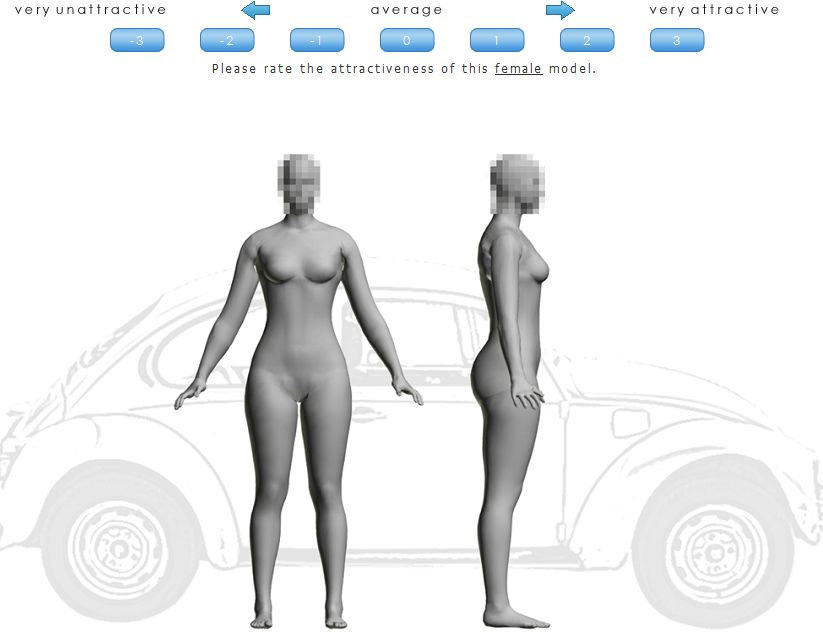Even across cultural divides, women who are young, tall and long armed were considered the most attractive, they found, to little surprise.
According to the researchers, traditional studies of attractiveness used a natural selection framework - an individual will always choose the best possible mate that circumstances will allow (romance of the fitter?). Those studies focused on torso, waist, bust and hip measurements.
In this new study, the team was interested in multivariate selection on female bodies so they measured the attractiveness of scans of 96 bodies of Chinese women who were either students or volunteers, aged between 20-49 years of age.
Videos of the models were shown to a sample of 92 Australian adults, 40 men and 52 women, aged between 18 to 58 years of age, and mostly of European descent. They then compared the attractiveness ratings given by the Australian group to the ratings from a group in Hong Kong to avoid cultural bias.
Both sample groups were asked to rate the models' attractiveness on a 7 point scale; on average the raters took just 5.35 seconds to rate each model. The team then explored the statistical results, focusing on age, body weight and a range of length and girth measurements.
"Physical attractiveness is an important determining factor for evolutionary, social and economic success," said lead author Robert Brooks, professor in the Evolutionary Ecology Of Sexual Reproduction Research Group at the University of New South Wales. "The dimensions of someone's body can tell observers if that person is suitable as a potential mate, a long term partner or perhaps the threat they pose as a sexual competitor."

Want to do your own ratings? Go to bodylab.biz and get started. Why the VW Beetle, you ask? The researchers say it is a fairly universal symbol for size so it made the height of the models easy to gauge for raters.
The results showed that there was a strong level of agreement between the 4 groups of Australian men and women, and Hong Kong men and women, with scans of younger, taller and lighter women being rated as more attractive. Women with narrow waists, especially relative to their height, were also considered much more attractive.
The study also revealed that BMI (Body mass index) and HWR (Hip to waist ratio) were both strong predictors of attractiveness. Scans of taller women who had longer arms were also rated highly, however leg size did not contribute significantly to the ratings.
"Our results showed consistent attractiveness ratings by men and women and by Hong Kong Chinese and Australian raters, suggesting considerable cross cultural consistency," concluded Brooks. "In part this may be due to shared media experiences. Nonetheless when models are stripped of their most obvious racial and cultural features, the features that make bodies attractive tend to be shared by men and women across cultural divides."
Citation: R. Brooks, J. P. Shelly, J. Fan, L. Zhai, D. K. P. Chau, 'Much more than a ratio: multivariate selection on female bodies', Journal of Evolutionary Biology, Volume 23, Issue 10, pages 2238–2248, October 2010 DOI: 10.1111/j.1420-9101.2010.02088.x






Comments